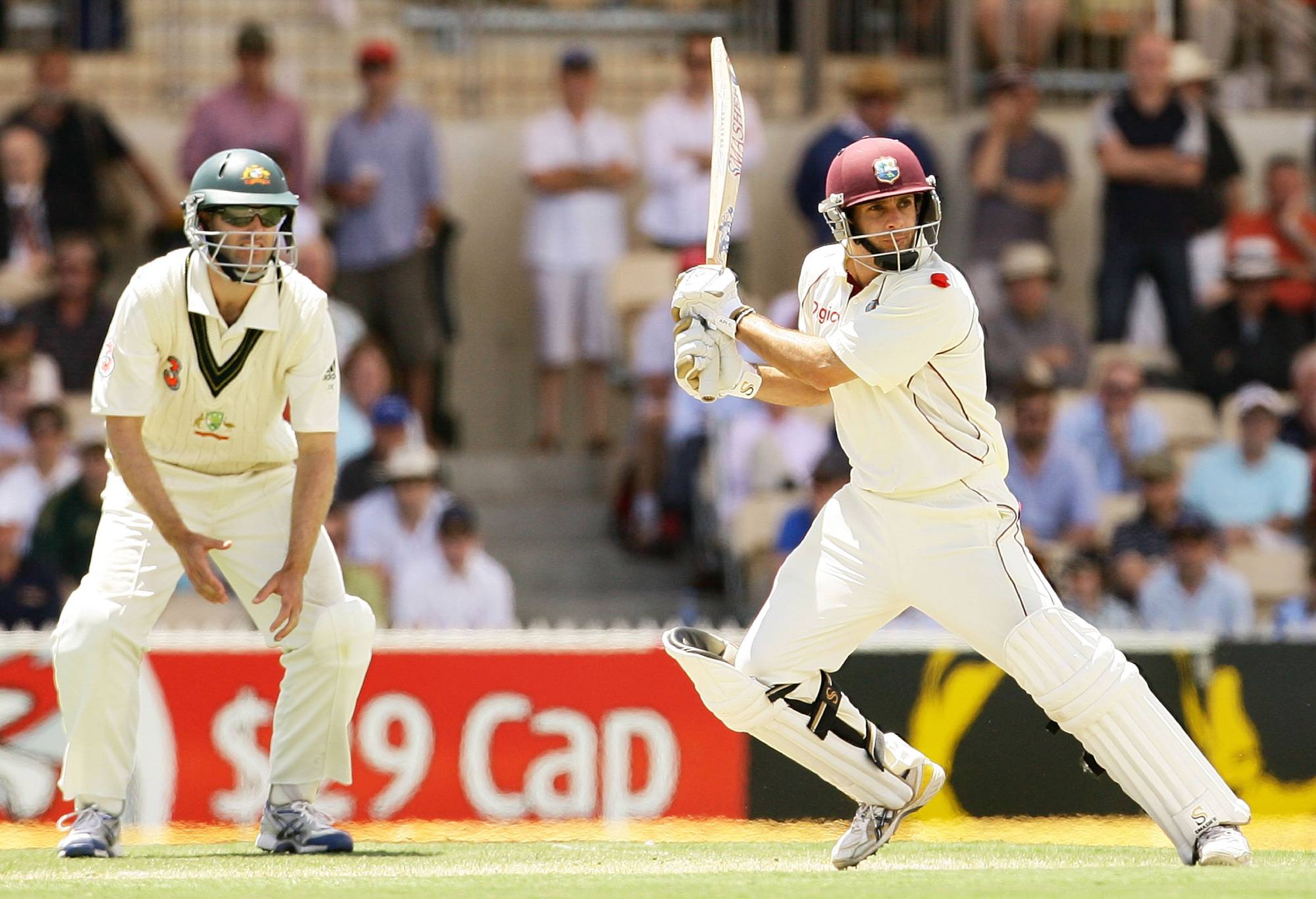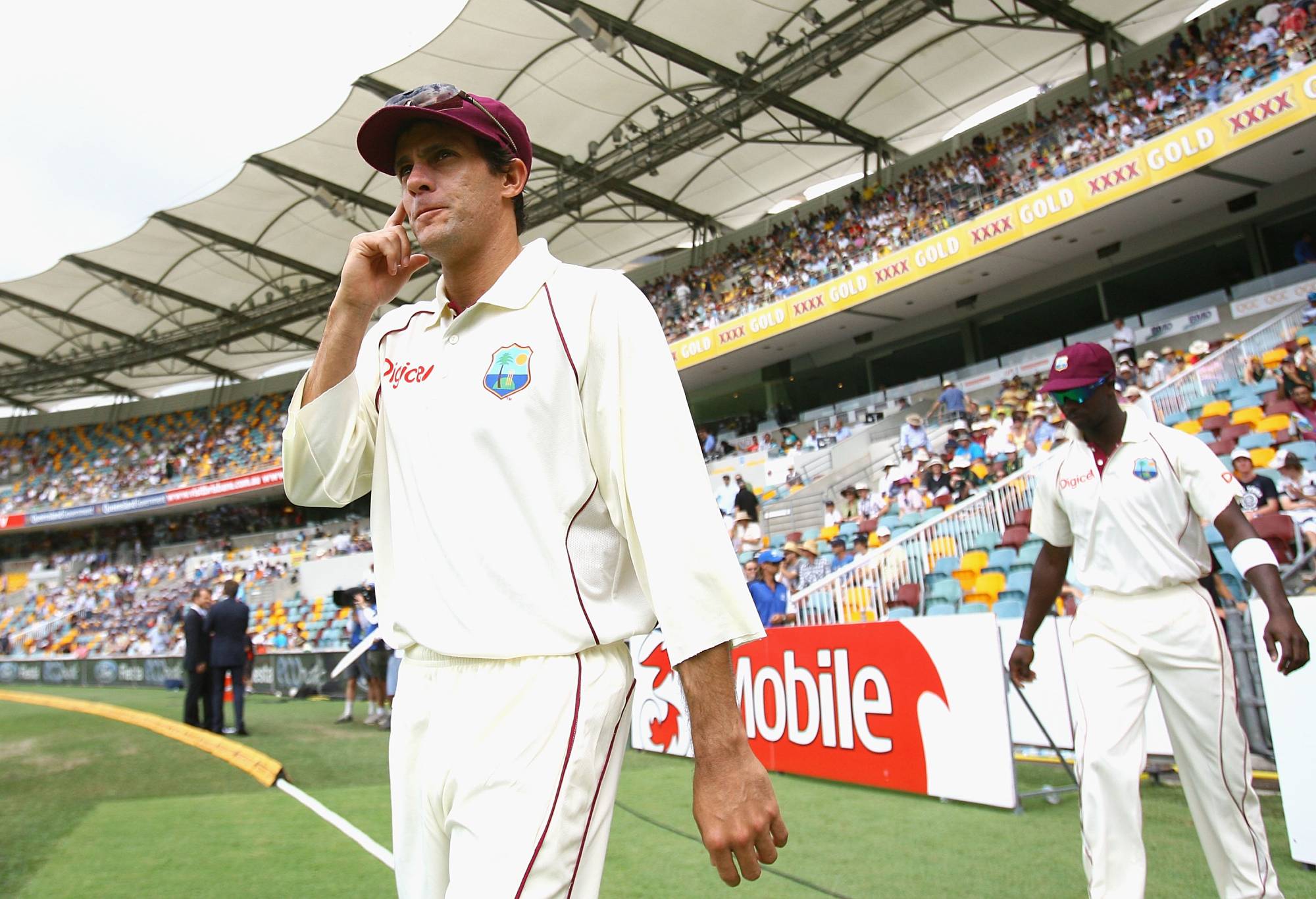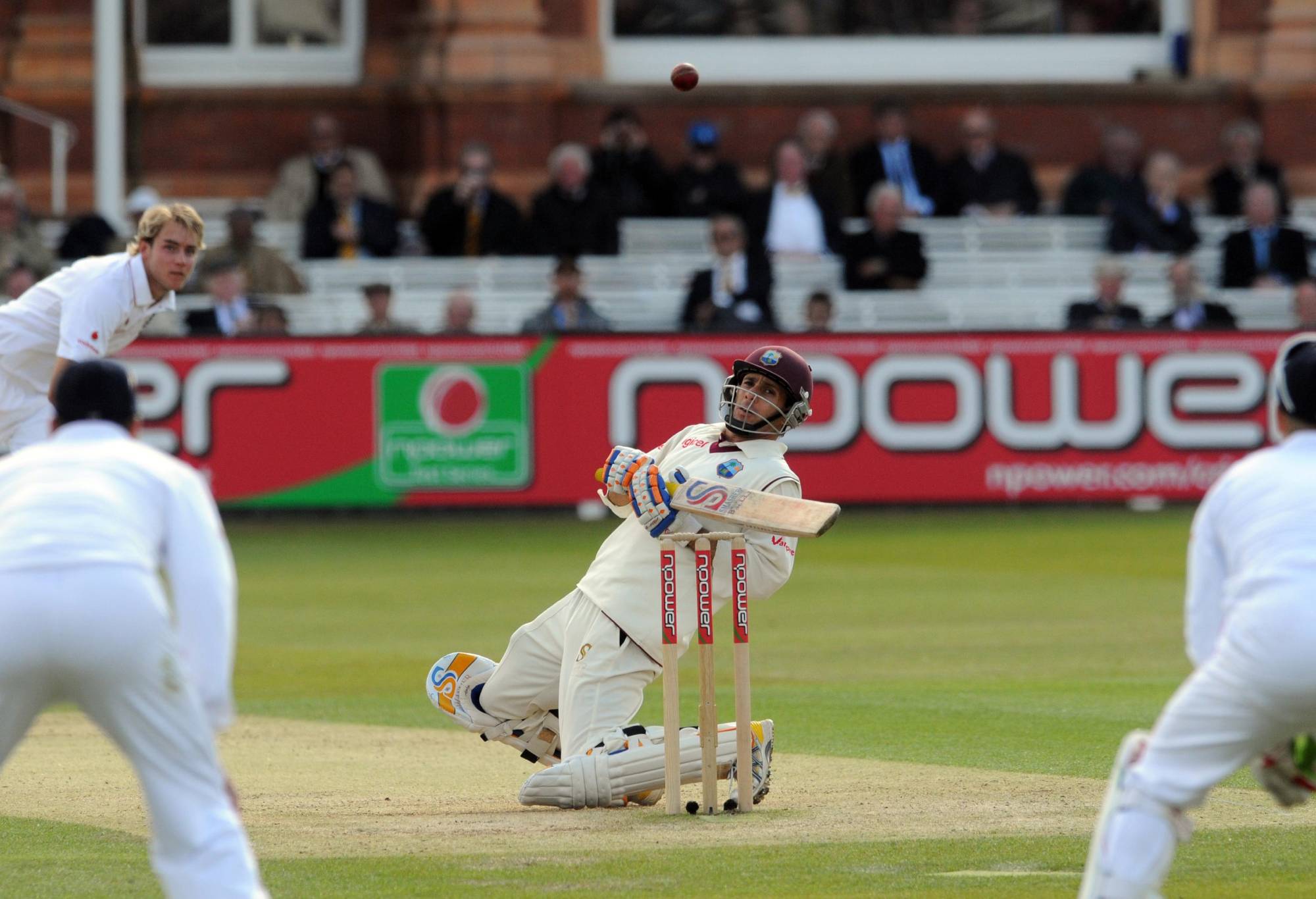The last time the West Indies played a Test at the Adelaide Oval they nearly recorded a huge upset over Australia on the back of the efforts of a player born in Perth and raised in Cairns.
A player who scored 92 in the first innings as part of a scarcely believable story of a battler who represented the Windies in 21 Tests after being told his first-class career was over by Queensland.
Someone who went to the Caribbean to watch the World Cup in 2007 and was celebrating Australia’s victory in the final by parading around Courtney Walsh’s bar in Jamaica with an inflatable kangaroo before making his West Indies debut the following year.
There are few stories in cricket that rival the unique tale of Brendan Nash, whose parents were born in Jamaica, moved to Australia a few months before he was born and that Caribbean link would later prove extremely valuable when it looked like his professional career was over.

Brendan Nash during the Third Test match between Australia and the West Indies at Perth in 2009. (Photo by Paul Kane/Getty Images)
Now 44 and living in Brisbane as a mortgage broker – his company name is Windies Financial Services, the left-handed batter is cheering on his former team on their two-Test tour of Australia which moves to Adelaide on Thursday, the venue where he was so close to hitting a century before he was bowled by former Bulls teammate Mitchell Johnson.
With star duo Chris Gayle and Dwayne Bravo belting centuries, the tourists went close to taking down the Aussies but were denied by the home side batting out for a draw on the final day after being set 330 from 76 overs.
Nash told The Roar that even after all this time, he is still pinching himself that he got to spend three years in the Test arena, scoring a couple of hundreds after making his belated debut a few days shy of his 31st birthday.
“I thought Test cricket was going to be beyond me,” he said.
“Everything that had happened to me at Queensland prepared me for the moment. When I went to the Caribbean as a 29-year-old I knew I’d only have one shot at this. I knew if I didn’t perform and got dropped, I’m not coming back from that at the age I was.
“It’s like Usman Khawaja at the moment going well at this stage of his career. That’s how I looked at it that every game was a bonus and I wouldn’t say it released the pressure but I went out there and enjoyed it and played the game for the love of it again for the first time in a while, rather than trying to make a career out of it, which was what I was doing the last two years of my Queensland career.”
A roundabout journey across the globe
Nash, whose father Paul was an Olympic swimmer for Jamaica at the 1968 Games, grew up in North Queensland before attending boarding school in Brisbane as a teenager.
“We had some family here on my mum’s side of the family. Mum came over to Perth with me heavily pregnant and then they moved us to Cairns, they thought it was a bit more similar to what they were used to in Jamaica, the climate and the lifestyle point of view,” he said.
After cutting his teeth in Brisbane grade cricket against the likes of Allan Border and Matthew Hayden, he made his Sheffield Shield debut in 2001 and carved out a solid career over the next seven seasons.
“My sixth first-class game was a Shield final which we won against Victoria so that was a very quick journey from that point of view,” he said.
Playing for Australia was not even on his radar. He could see how hard it was for more prolific state teammates like Martin Love, Jimmy Maher, Andrew Symonds, Andy Bichel, Michael Kasprowicz and Stuart Law to get a run for the national side, he was just happy to ply his trade on the domestic circuit for as long as he could.
“Being honest, I don’t think that Australia was ever on the cards at any point. It was not even something I was really aspiring to. It did feel like it was more than one step away, I was never really a regular with Queensland. It was very difficult for me to cement my spot there just with the calibre of players that we had.
“When I was told my career was over in Queensland, I was 28, 29, so I thought that was it. I’d had a good run but I was devastated because I thought I had a bit more to give.”

Brendan Nash plays a cut shot at Adelaide Oval. (Photo by Mark Nolan/Getty Images)
‘I had to have a pretty thick skin’
When he went to the Caribbean to watch the World Cup as a fan in 2007, he realised he wasn’t ready to retire so he decided to move to Jamaica “to experience some of my heritage and the culture”.
His goal was simply to represent Jamaica at first-class level and he caught a lucky break when his godfather had signed him up to be a member years before at a local cricket club in Kingston.
He hit a half-century in his first match, putting on a partnership with a guy who he’d just met who it turns out was a Jamaican selector, so he got invited to a trial for the squad.
Nash scurried around to get his citizenship and passport documents sorted so he could be eligible and was soon lining up for the Jamaicans against other Caribbean nations.
Nash, who became the first white cricketer to play for the Windies for more than three decades and he copped abuse from fans and sideways glaces from teammates who questioned his motives, the theory being that he was transferring his allegiances because he had spotted a chance at a weaker nation.
CLICK HERE for a seven-day free trial to watch international cricket on KAYO
“Because of the way I looked, the (Jamaican) trials were a very interesting for me, walking into that environment, not really knowing anyone and them not knowing me,” he said.
“I was walking in pretty much off the street. It took a bit of time to break down some resistance from the players, I had to have a pretty thick skin.”
He used his time from being in the Queensland set-up to help his new teammates with a few tips and techniques to improve their game as he gradually gained acceptance.
“Using my knowledge from professional cricket in Australia, that was one of the ways I broke down some of the barriers to show that I wasn’t there to take the mickey or be there for my own agenda,” he said.
“I’d stay behind after training to give them throwdowns. Gradually the crowd came around which came down ultimately to performance. If I wasn’t doing well I would have been run out of town quick smart.”
He made his Test debut for the Windies on the tour to New Zealand in late 2008 and after a modest start in Dunedin, peeled off a pair of half-centuries in his second match at Napier to feel like he belonged at the highest level.
“It was surreal at that time,” he said. “I was lucky that there were a few Jamaicans in the West Indies side then like Chris Gayle and they were looked up to by the guys from the other islands so that made it easier for me to transition into the team.
“I’m not sure I won some of them over with what was happening. I never felt during a game that it was an issue but there were some who didn’t agree with it (his selection) but my form over time warranted selection to stay in the team.”

Brendan Nash walks onto the Gabba for day one of the 2009 Test. (Photo by Ryan Pierse/Getty Images)
Facing up to the baggy green brigade
After breaking through for his first century, 109 against England in Trinidad, in his seventh Test, he returned to Australia in 2009 for the three-match series, starting off at the Gabba where he’d only ever known the confines of the home dressing room.
He made just 18 and seven as they lost the series opener by an innings and 65, narrowly missed out on a ton in Adelaide before posting 44 and 65 in the third Test in Perth as Australia snuck home by 35 runs to clinch the series 2-0.
“My ex-roommate Mitchell Johnson got me out in Adelaide. It would have been lovely (to get a ton) but that was a really strange series for me,” he said.
“Starting off at the Gabba, walking in for the game and I remember day one going into the away dressing room. I hadn’t done that in seven years playing for Queensland only to go into to see the opponents after a game was finished.
“The room attendant came to me, I’d had a good relationship with him, and he handed me my name tag that you put over your locker. He said I knew you’d be back for this one day.
“Walking out to bat I didn’t get booed or anything like that but we lost so that was really disappointing.
“I settled down in Adelaide and then in Perth we only fell a few runs short from pulling off a win from nowhere. It was an interesting time to go back so early in my Test career, if I’d had a few more games under my belt it would have been easier.”

Brendan Nash avoids a bouncer from Stuart Broad at Lord’s. (Photo by Anthony Devlin – PA Images/PA Images via Getty Images)
A swift rise and fall
The following year Nash bettered his highest score with 114 in St Kitts against a South African attack featuring Dale Steyn, Morne Morkel and Jacques Kallis.
“To get one century people might say it was a fluke but to get a second one against an attack of that calibre was a real sense of achievement,” he said.
He was briefly vice-captain before, as he predicted, one form slump and his time as a Test cricketer was over.
Nash had four low scores in a row against Pakistan and when he went cheaply in both innings against India at Kingston in 2011, his fairytale was over and he finished his career by playing English county cricket for a few years with Kent.
“I was thinking of retiring before that last series but when I saw the first Test was in Jamaica and I got picked I thought I’d give it another go but I kind of felt like I was playing for the wrong reasons again,” he recalled.
“I would’ve liked to have gone out on my own terms.”
But you won’t hear any complaints from Nash about the abrupt end to his international career when he played 21 Tests and nine ODIs more than he ever thought he would.
>Cricket News

%20(3).jpeg)



0 Comments